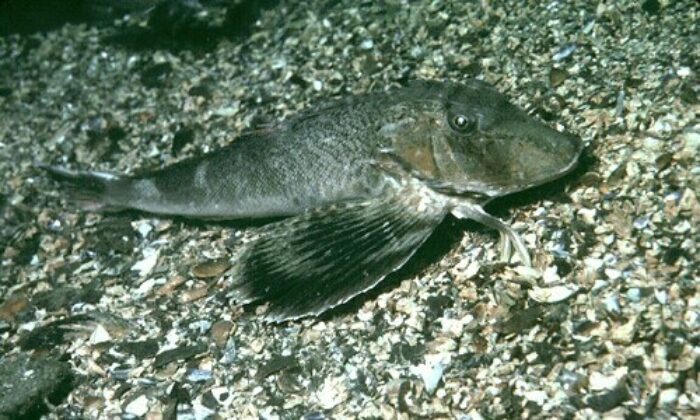Northern Sea Robin
Prionotus carolinus
The northern sea robin is an unusual-looking fish with a mottled body, wing-like fins and a flat, bony head. It visits the deep waters of the lower Chesapeake Bay from spring through early winter.

